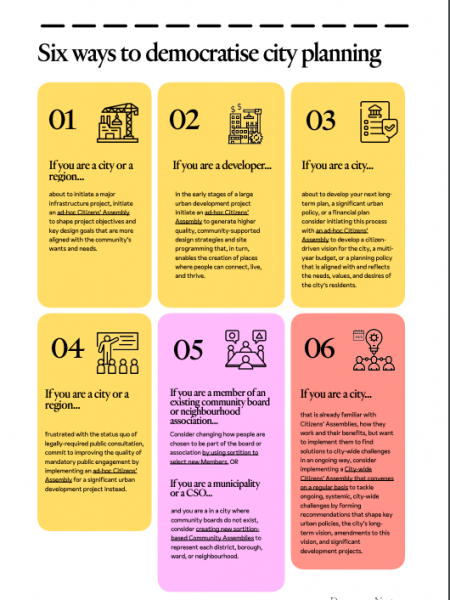Article by Stefaan Verhulst and Artur Kluz: “This week’s annual Munich Security Conference is taking place amid a turbulent backdrop. The so-called “peace dividend” that followed the end of the Cold War has long since faded. From Ukraine to Sudan to the Middle East, we are living in an era marked by increasingly unstable geopolitics and renewed–and new forms of–violent conflict. Recently, the Uppsala Conflict Data Program, measuring war since 1945, identified 2023 as the worst on record since the Cold War. As the Foreword to the Munich Security Report, issued alongside the Conference, notes: “Unfortunately, this year’s report reflects a downward trend in world politics, marked by an increase in geopolitical tensions and economic uncertainty.”
As we enter deeper into this violent era, it is worth considering the role of technology. It is perhaps no coincidence that a moment of growing peril and division coincides with the increasing penetration of technologies such as smartphones and social media, or with the emergence of new technologies such as artificial intelligence (AI) and virtual reality. In addition, the actions of satellite operators and cross-border digital payment networks have been thrust into the limelight, with their roles in enabling or precipitating conflict attracting increasing scrutiny. Today, it appears increasingly clear that transnational tech actors–and technology itself–are playing a more significant role in geopolitical conflict than ever before. As the Munich Security Report notes, “Technology has gone from being a driver of global prosperity to being a central means of geopolitical competition.”
It doesn’t have to be this way. While much attention is paid to technology’s negative capabilities, this article argues that technology can also play a more positive role, through the contributions of what is sometimes referred to as Peacetech. Peacetech is an emerging field, encompassing technologies as varied as early warning systems, AI driven predictions, and citizen journalism platforms. Broadly, its aims can be described as preventing conflict, mediating disputes, mitigating human suffering, and protecting human dignity and universal human rights. In the words of the United Nations Institute for Disarmament Research (UNIDIR), “Peacetech aims to leverage technology to drive peace while also developing strategies to prevent technology from being used to enable violence.”This article is intended as a call to those attending the Munich Security Conference to prioritize Peacetech — at a global geopolitical forum for peacebuilding. Highlighting recent concerns over the role of technology in conflict–with a particular emphasis on the destructive potential of AI and satellite systems–we argue for technology’s positive potential instead, by promoting peace and mitigating conflict. In particular, we suggest the need for a realignment in how policy and other stakeholders approach and fund technology, to foster its peaceful rather than destructive potential. This realignment would bring out the best in technology; it would harness technology toward the greater public good at a time of rising geopolitical uncertainty and instability…(More)”.

